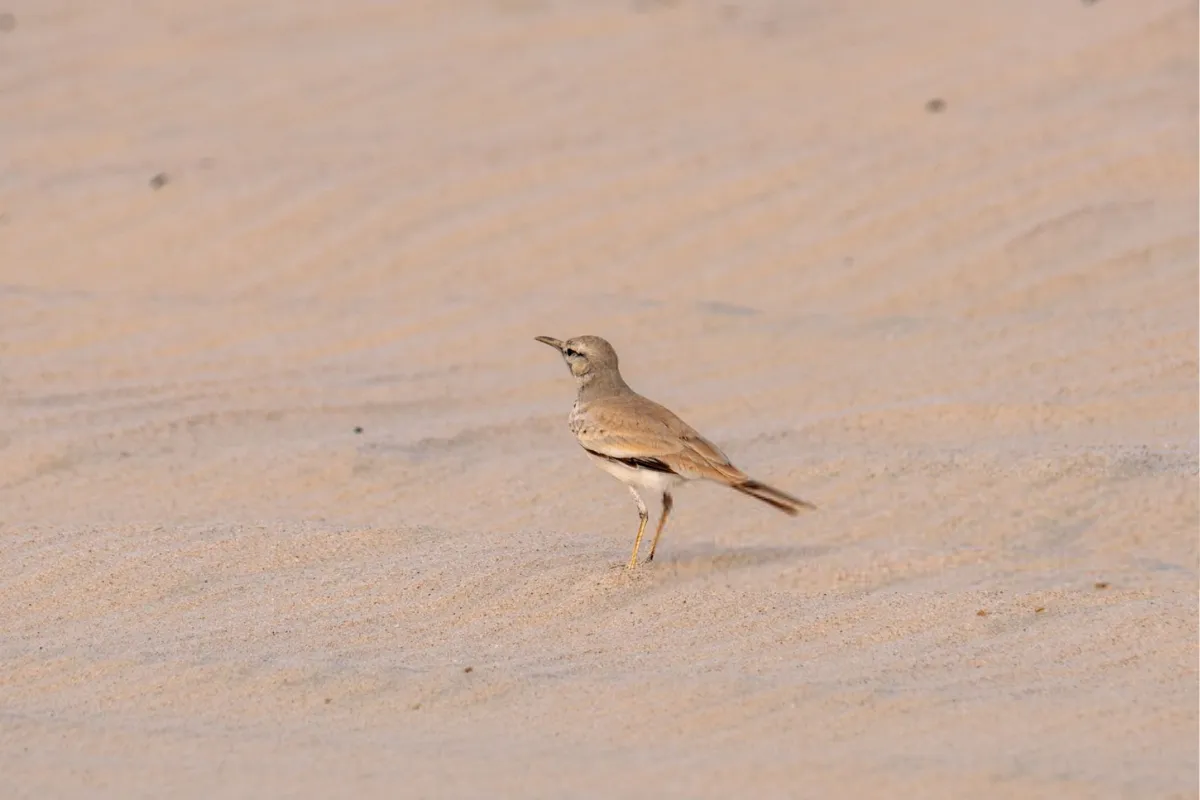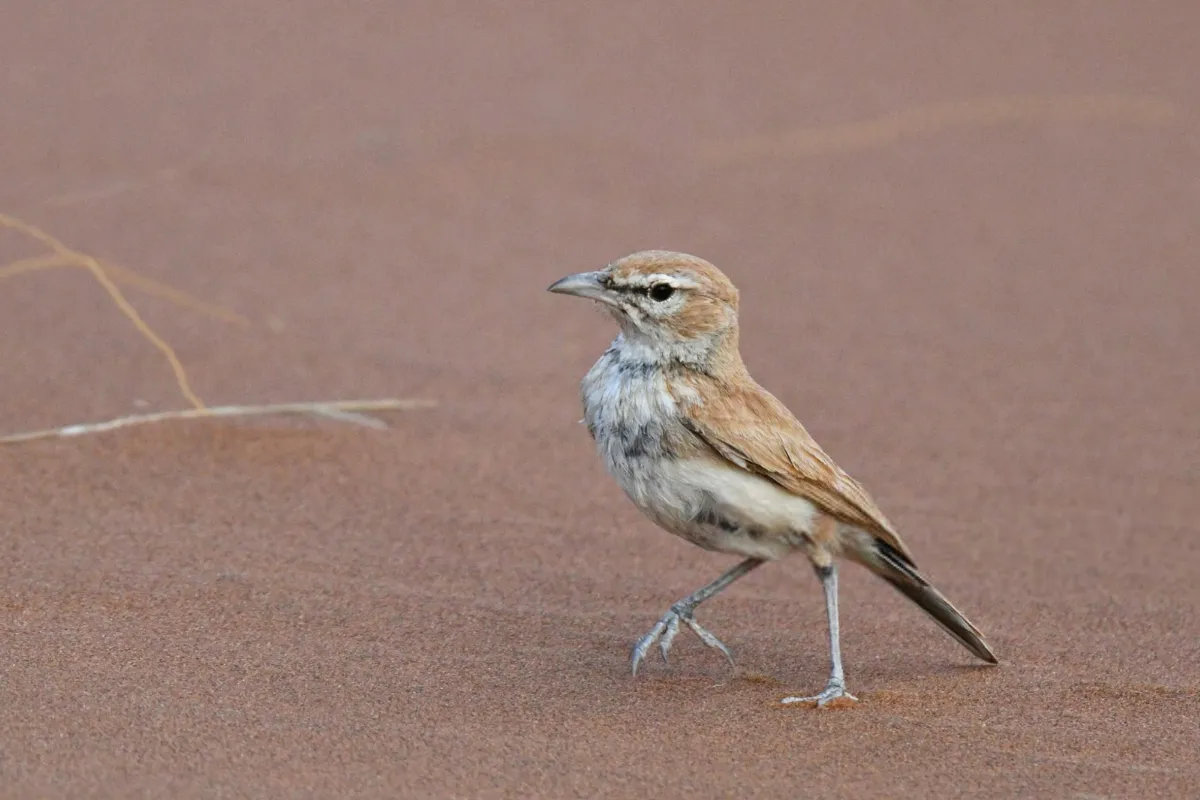Birdwatching in Merzouga reveals the remarkable adaptability of avian life in the Sahara. As the sun rises over the dunes, desert birds emerge from their nocturnal shelters, their calls breaking the profound silence of dawn. Greater Hoopoe-Larks perform their distinctive display flights, rising vertically before parachuting down with spread wings, while Desert Larks blend perfectly with the sand, becoming nearly invisible until they move. Brown-necked Ravens glide effortlessly on thermal currents above the dunes, their distinctive calls echoing across the landscape.
When seasonal rains transform the desert, the atmosphere changes dramatically. Temporary lakes attract thousands of migrating birds, with flamingos standing in elegant groups, their pink forms creating a striking contrast against the golden dunes. Waders probe the shallow waters, while ducks and shorebirds arrive in waves, turning quiet desert basins into bustling avian communities.
Desert birds follow patterns shaped by their harsh environment. Sandgrouse arrive in synchronized groups at water sources, their swift flights and characteristic calls marking nature’s timekeeping. Tiny Desert Warblers move through scattered bushes, finding insects and shelter in vegetation that appears lifeless to the casual observer. Bee-eaters perch on exposed branches, launching aerial pursuits of insects that themselves depend on brief periods of desert bloom.
Merzouga’s position along African-Eurasian migration routes creates remarkable bird encounters. Seasonal passages bring European migrants through this desert corridor, where they rest alongside African desert specialists. Desert-adapted species show remarkable efficiency in exploiting scarce resources, forming loose feeding associations and following sporadic insect emergences or seeking areas where desert plants produce seeds.
Birdwatching in Merzouga connects observers to centuries of desert culture. Local knowledge of bird behavior has long helped people understand seasonal changes and weather patterns. Their movements and behaviors continue to mark the rhythms of desert life, from the arrival of migrating species signaling seasonal changes to the morning chorus marking the start of each day. Through observing these desert birds, we witness not just individual species, but the complex web of life that thrives in what might appear to be an inhospitable environment.









